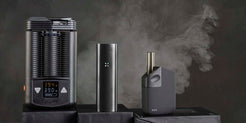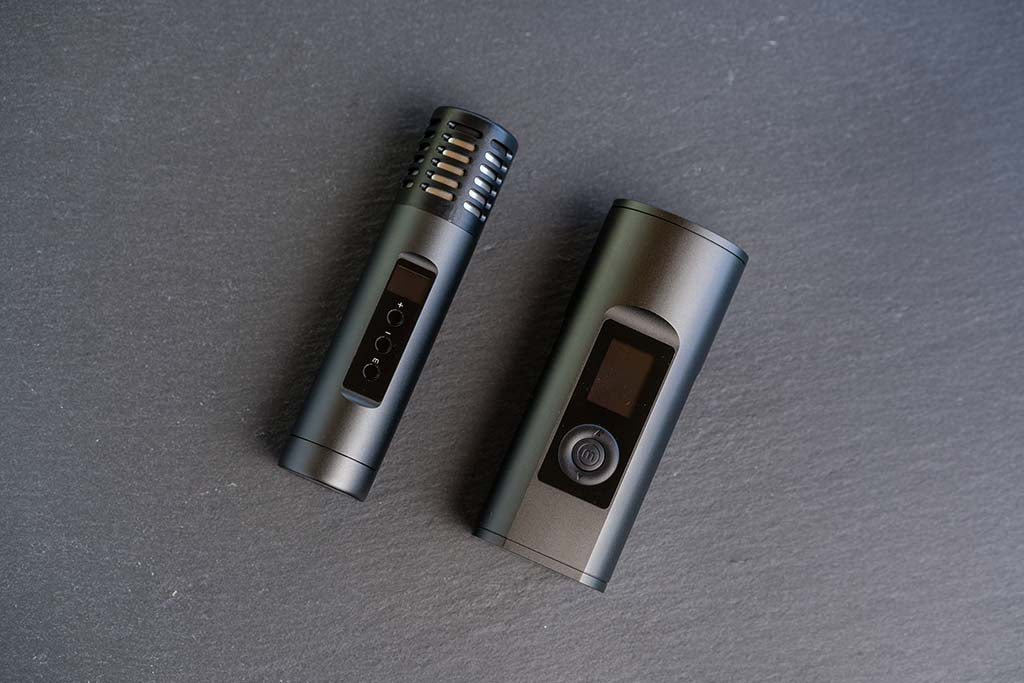It’s tricky to pick a clear winner between the Arizer Air 2 and Solo 2. These Arizer vaporizers have a lot in common, with clean, tasty vapor and on-board temperature controls. They also both use an interchangeable glass stem system unique to the Arizer line.
Both vaporizes are the same price, so the best choice for you really comes down to three major differences: battery, heat up time, and size.
Same tasty vapor & open airflow
Both the Arizer Air 2 and Solo 2 feature the same upgraded heating element and improved, open airflow. As a result, both vapes offer an essentially, identical vaping experience; they both put flavor first, with open, deep draws that have a surprising potency. Both leverage hybrid heat, so your herbs won’t cook when you aren’t actively drawing, at least compared to pure conduction vaporizers.
Solo 2 heats up faster
If there’s one thing to complain about on the Air 2, it’s heat up time. Arizer improved slightly for the updated model, but it still takes a minute or more to reach cruising altitude. The Solo 2 on the other hand, is one of the fastest portables to heat up and hits proper vaping temps in around 20 seconds. The 45+ second difference might not seem like much, but waiting to get to temperature can become tiresome.
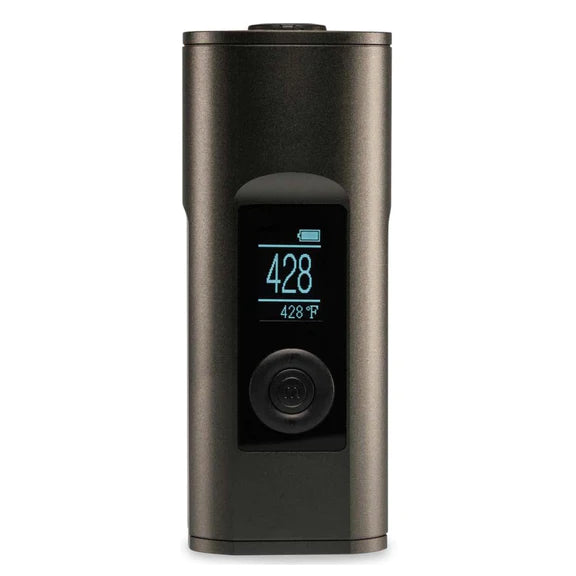
Arizer Solo 2 Vaporizer
C$169.99
The Solo 2 is Arizer’s most popular portable vaporizer.
- Fantastic taste
- Quick heat up time
- Long battery life
- Easy clean up
- Customizable features
Free Canadian Shipping
Easy Returns
Expert Advice
Both have easy to use full digital temperature controls
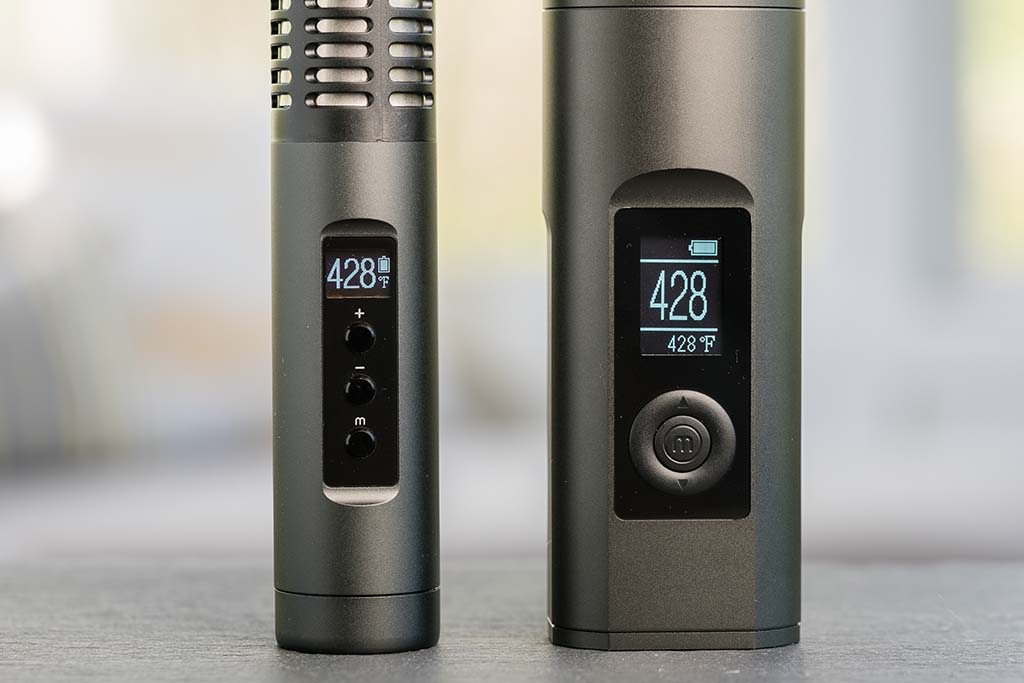
Both the Air 2 and Solo 2 feature Arizer’s updated digital controls, which we prefer over the rocker switch and colored lights found on the original Air and Solo. You can manage all of the session controls right on both devices, without the need of an app. Both vapes also cover a full temperature spectrum, all the way up to 428° F, adjustable in one degree increments. The only difference comes down to start-up time -- the Solo 2 will turn on in as few as two seconds, where the Air 2’s shortest time is four seconds.
Air is smaller, but neither is particularly portable
Size sets the Solo 2 and Air 2 apart, the Solo being the larger of the two. It’s only slightly taller, but is noticeably thicker. The Air 2’s slightly smaller footprint makes it more pocketable, and discrete, but both are comfortable in hand when loading and vaping. The Solo 2 includes slightly longer glass stems, but they’re interchangeable with the Air 2 stems, so you always order either and use whichever you like.
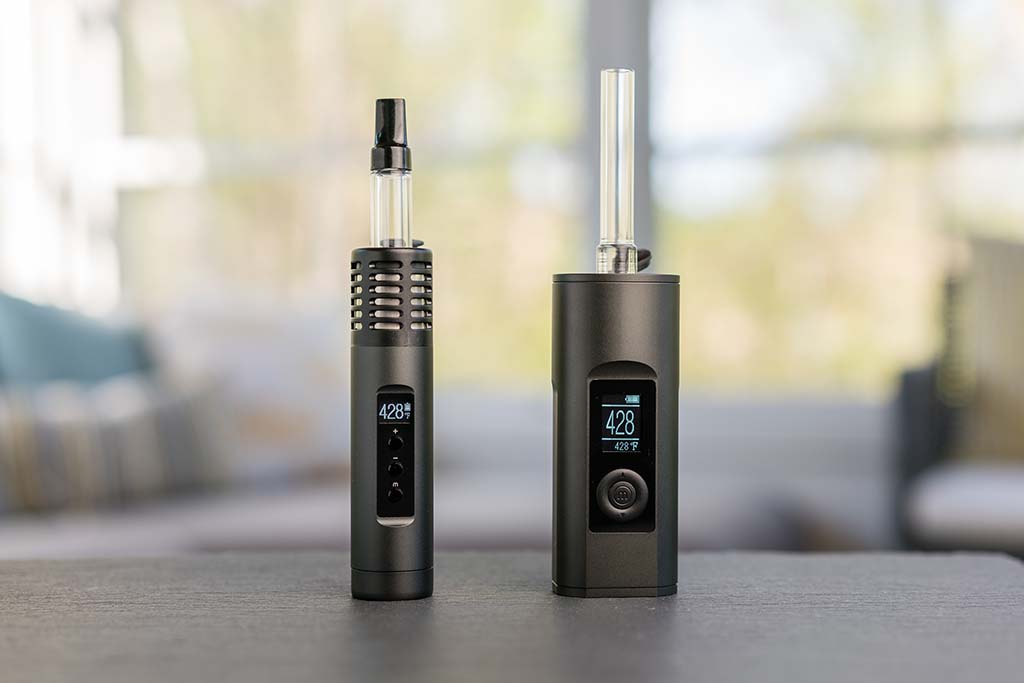
You’ll have to carry at least one of the glass stems around with the vape, which makes neither vaporizer particularly mobile or discrete. If you’re looking for something with Arizer qualities that you can take with you, the ArGo is worth checking out.

Arizer Air 2 Vaporizer
C$159.95 Regular price: C$289.99
More vaping time VS swappable batteries
A bigger footprint also means more battery capacity. While the Arizer Air 2 runs for 75-80 minutes on a full charge, the Solo 2 vaporizer pushes three hours before running out of juice. That’s a serious jump in battery life, but the Air 2 has a trick up its sleeve.
Related: Arizer Air 2 Review
Even the largest capacity battery can’t beat the Air 2’s secret weapon -- swappable batteries. It uses industry standard 18650 batteries, so you can charge up a few extras and bring them along for the ride. Its runtime is only limited by how many batteries you have, and it also extends the vape’s lifetime.

As the batteries get older and start losing their charge faster, you can just swap them out. With most vapes, you’d end up with an expensive paperweight. The Solo 2’s batteries are user replaceable for those that are handy, but not anywhere near swappable like the Air. It’s replaceable if it starts to fail, but not something that you would swap out on a regular basis.
USB vs DC charging
The Air 2 uses rechargeable 18650 batteries, so you can buy a wall charger to juice them up outside the device. The unit also has a USB port to charge the vape up with the battery installed. The Solo 2 needs to be charged with the included DC charger, which means it needs a dedicated outlet, and it takes about three hours to go from empty to full. Its longer battery life helps offset that drawback, but it’s something to keep in mind. Both the Air 2 and Solo 2 support pass-through charging, so you can use them while plugged in, but you’ll need to have a little juice in the battery first.
The ArGo alternative
While the Solo 2 and Air 2 both have compelling qualities, and some minor design differences, the compact Arizer ArGo takes a different approach. It’s smaller and more discreet, and the stem fits entirely into the body, so you can drop it in your pocket, or fit it in your palm. For more details on the ArGo, check out our full review.
Who should buy the Solo 2?
If your vape is going to spend most of its life at home, we recommend the Solo 2. Its 20-30 second heat up time is a noticeable quality of life improvement over the Air 2, and it will run for several days of regular use without a charge. It’s easier to move around the house, or take to a friend’s, than a desktop vape, and delivers the same great vapor quality and wide open airflow you’d find on the more portable Air 2.
Who should buy the Air 2?
The Air 2 is the pick for extended trips. If you often find yourself off camping, or away at a music festival, you can bring some extra charged batteries along, or charge it off of any portable power source via USB. The swappable batteries are a killer feature, and if you need it, even the longest-lasting built-in batteries won’t suffice. The glass stems still keep the Air 2 from being completely portable and discrete, but the ArGo vape solves that while keeping the Arizer’s best qualities.


